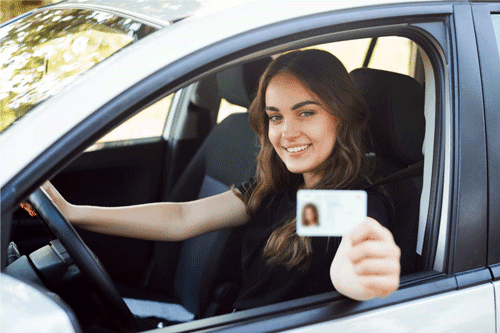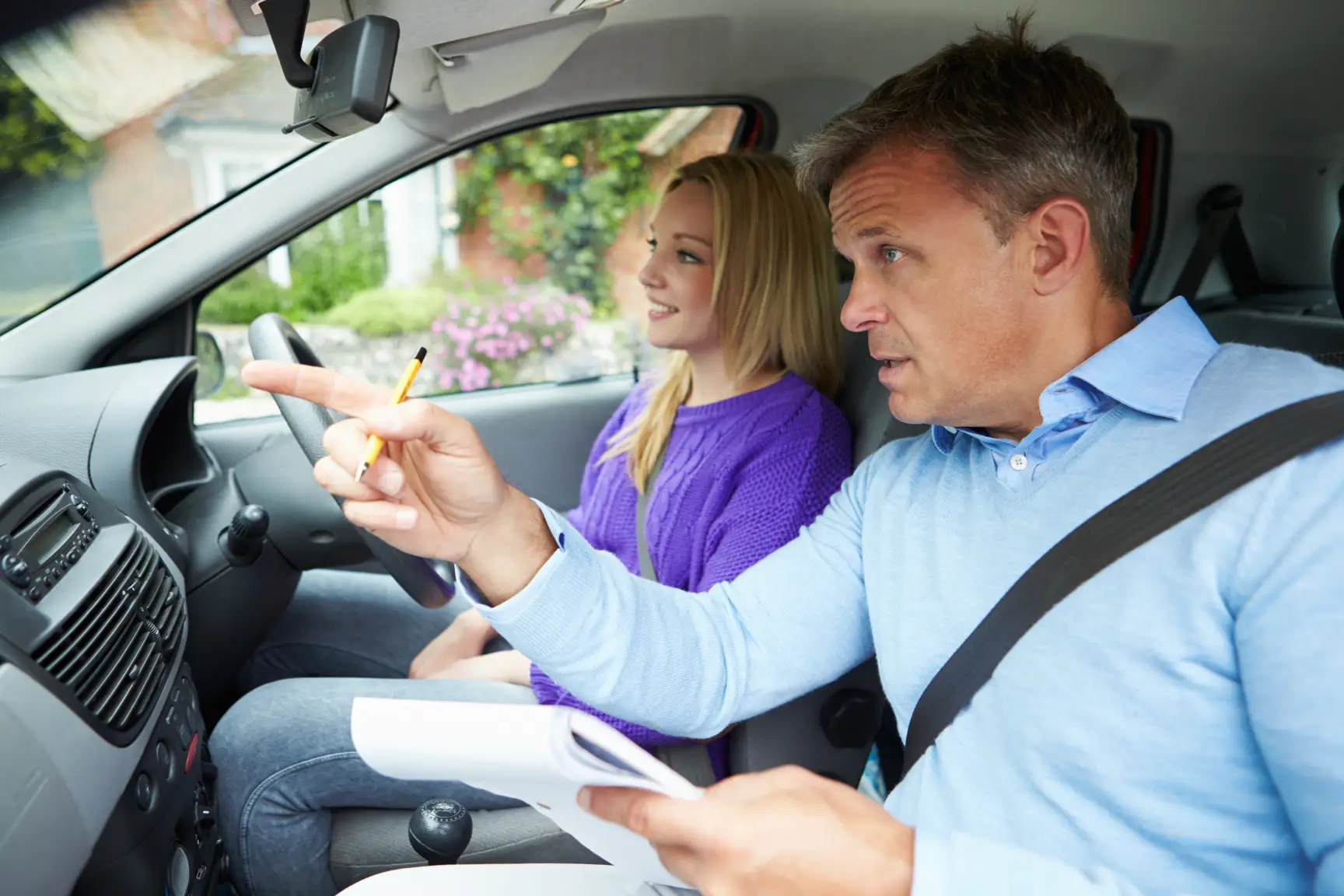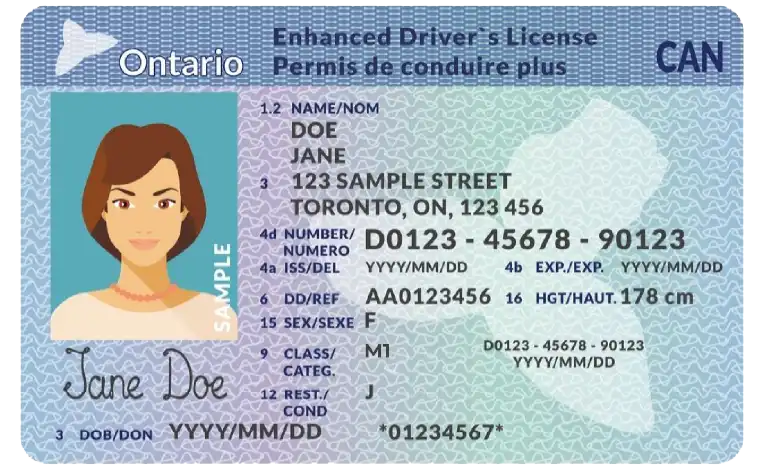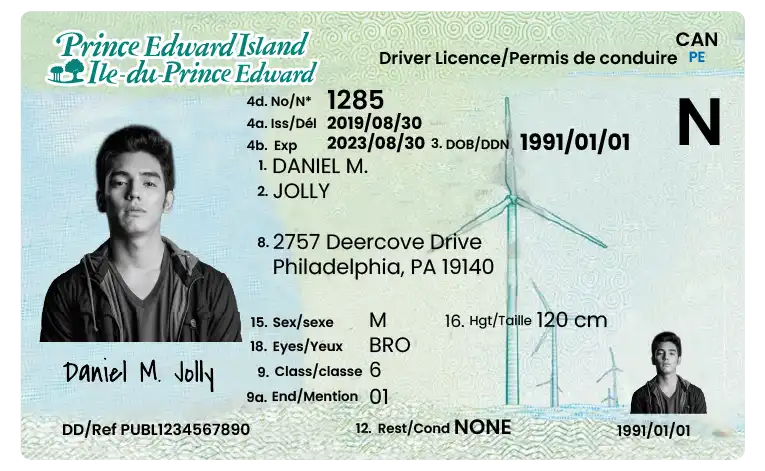- Need Any Help: +1 647-760-5505 or
- [email protected]
Trubicars partners with leading, top-rated, top-quality driving schools throughout Canada and passes down the best pricing and packages to you. This means that regardless of where you live or what type of license you are looking to get, you can rest-assured that when you choose a package from Trubicars that you will be properly prepared and confident to pass your test.

Driving a vehicle is a privilege and having an Ontario driver’s license is proof of that privilege. It’s not just about having a driver’s license. You must carry it with you whenever you drive.
In Ontario, it’s not just one or two different types of license classes. There are 12 of them. Each license class allows you to drive different vehicles.
For example, there are passenger vehicle licenses and commercial vehicle licenses. You may have more than one license class, and you can combine license classes. For example, you may have an ABM license.
The license class you have must match the type of vehicle you are driving. There are a set of minimum requirements and required tests that you must meet. Each test for cars, vans, and small trucks is done at the DriveTest Centre. Testing for motorcycles or commercial vehicles is completed at a DriveTest Centre or a registered training program. The organizations must be authorized by the Ministry of Transportation for testing.


Ontario uses Official Ontario driver’s license photo cards. The license photocards include your digitized photograph and signature. Information on an Ontario driver’s license includes your name, address, date of birth, gender (M, F, or X), height, license class, issue date of the license, and expiry date. The codes showing which class of vehicles you may drive and if you have any applicable conditions, such as glasses, are also on the license.
Temporary driver’s licenses are typically issued but are short-term documents used by licensed drivers before receiving an official Ontario driver’s license card in the mail. Your temporary driver’s license would be for up to 90 days.
As a driver’s license holder, you must keep the information on your license up-to-date. You would need to renew your driver’s license card periodically. If your driver’s license does expire, you may need to re-apply for that particular license.
An Ontario Photo Card or a driver’s license photo ID card from another province, state, or country cannot be held simultaneously as an Ontario driver’s license. If you have an Ontario Photo Card or a photo ID card from any province, state, or country, you must turn in your existing ID and driver’s license.
You must inform DriveTest if you have held an Ontario Photo Card, even if it has expired or canceled when you apply for a driver’s license. If you do not inform DriveTest, it may delay you from getting your driver’s license. Your Ontario Photo Card will be canceled upon passing the required driver’s license testing. If you wish to re-apply for your Ontario Photo Card, you must give up your driver’s license.
The following are the minimum requirements for obtaining a driver’s license in Ontario:

Can drive any tractor-trailer or combination of a motor vehicle and towed vehicle, where the towed vehicles exceed a total gross weight of 4,600 kilograms. You can also operate a D, G, and A with condition R vehicle.
A with condition R: This class of license restricts Class A License Drivers from pulling double trailers or a trailer with air brakes. This license class can also drive D and G Class vehicles
This licensed class can drive any school-purpose bus with a designed seating capacity for more than 24 passengers. This license class can also drive C, D, E, F, and G Classes.
This class can drive any regular bus with a designed seating capacity for more than 24 passengers. They can also operate any D, F, and G Class vehicles.
This license class can drive any truck or motor vehicle combination exceeding 11,000 kg. The towed vehicle is not over 4,600 kg. This license class can also operate a G Class vehicle.
This licensed class can drive any school-purpose bus with a maximum seating capacity of 24 passengers. This class can also operate F and G Class vehicles.
This license can drive any regular bus with a maximum 24-passenger capacity and ambulances. They can also drive G Class vehicles.
This license class can drive any car, van, or small truck, including a combination of vehicle and towed vehicles up to 11,000 kg, provided the towed vehicle is not over 4,600 kg. They cannot drive a motorcycle or motor-assisted bicycle, a bus carrying passengers, or an ambulance while providing ambulance service. They can operate a recreational vehicle towed by a pick-up truck that may not exceed 4,600 kg.
This is level 1 of graduated licensing. G1 holders of this license may drive G Class vehicles when accompanied by a fully licensed driver with at least four years of driving experience. Additional conditions do apply.
This is level 2 of graduated licensing. Holders of this license may drive Class G vehicles without an accompanying driver but are subject to certain conditions. This includes the number of young passengers that teen G2 drivers can carry between midnight to 5 a.m.
This is a license to drive motorcycles, including limited-speed motorcycles (motor scooters) and motor-assisted bicycles (mopeds). M Class license holders can operate a Class G vehicle under the conditions that apply to a Class G1 license holder. They may drive M Class vehicles with condition L, including motor scooters and mopeds.
This is level 1 of graduated licensing for motorcycles, which includes limited-speed motorcycles (motor scooters) and motor-assisted bicycles (mopeds). M1 license holders may drive a motorcycle under certain conditions. They may operate M class with condition L (motor scooters and mopeds)
This is level 2 of graduated licensing for motorcycles, which includes limited-speed motorcycles (motor scooters) and motor-assisted bicycles (mopeds). M2 holders may drive a motorcycle and have a zero-blood-alcohol level. M2 Class license holders may also operate a Class G vehicle under the conditions that apply to a Class G1 license holder. They may also operate an M class with condition L (motor scooters and mopeds)
M (or M1, M2) with condition L (LSM/moped): These are limited-speed motorcycles (LSM) or mopeds only. Limited-speed motorcycles are motorcycles with a maximum speed of 70 km/hr. If the LSM was manufactured after 1988, they have a label on the vehicle that indicates it to be an “LSM/MVL”.
M (or M1, M2) with condition 1 (motor tricycle): This license class is only for motor tricycles or three-wheeled motorcycles. These vehicles move on three wheels, have straddled seating, and use a handlebar for steering. They can carry no more than four passengers and have a maximum gross vehicle weight of 1,000 kg. Some of the three-wheeled vehicles are considered two-wheeled open motorcycles by Transport Canada because of the close spacing of their front wheels. Road tests with one of these vehicles can allow you to get a full M Class driver’s license.
Once you acquire the knowledge provided in
those tests, you are ready to pass the
test, the first time.
